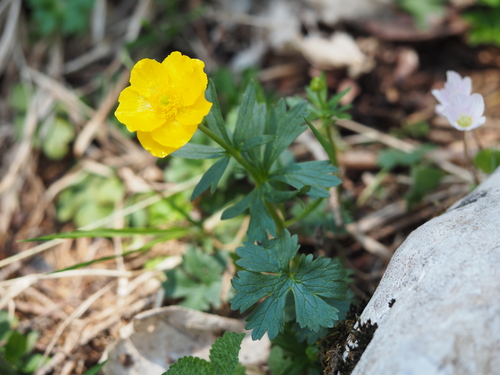About Wood Anemone
A perennial herbaceous plant native to Europe, known for its delicate white flowers that bloom in early spring.
Care Requirements
Water Needs
every 7–10 days during active growth, reduce in dormancy
Water deeply but infrequently; avoid waterlogged soil; adjust based on dormancy ...Light Requirements
Partial shade to full shade
Partial shade to full shade; 3–4 hours of morning sunlight or dappled light is...Care Level
Moderate
moderateSoil Requirements
moist, humus-rich, well-drained soil
Enrich with organic matter; ensure good drainage; maintain consistent moisture....Temperature Needs
Cool temperatures; ideal range 50–70°F (10–21°C); tolerates cold but requires protection from extreme heat.
Protect from extreme heat; mulch for winter insulation; adjust watering with tem...Common Problems & Solutions
Yellow Leaves
Yellowing leaves in Anemone nemorosa can indicate nutrient deficiencies, particularly nitrogen, or m...
Diagnose & FixWilting
Wilting in Anemone nemorosa is often a sign of water stress, either due to drought or overwatering, ...
Diagnose & FixComplete Care Guides
How to Propagate
Division of rhizomes or seed propagation....
Best Time: Early spring before active growth begins; or after flowering for division.
Full Propagation GuideHow to Prune
Deadheading spent flowers; trimming yellowed or damaged leaves....
Frequency: After flowering; or as needed to remove dead growth.
Full Pruning GuideHow to Repot
Gently lift rhizomes, divide if necessary, replant at the same depth with fresh soil....
Best Season: Early spring before growth begins.
Full Repotting GuideHow to Fertilize
Light feeding in early spring with a balanced, slow-release fertilizer; avoid fertilizing during dor...
Frequency: every 2–3 months during active growth, none in dormancy
Full Fertilizing GuideFrequently Asked Questions
Q: How do I propagate Anemone nemorosa?
A: It can be propagated by division or by planting seeds, though seeds may take a few years to flower.
Read Full AnswerQ: Does Anemone nemorosa require full sun?
A: No, it prefers partial shade or full shade, especially in regions with hot summers.
Read Full AnswerQ: Is Anemone nemorosa toxic to pets?
A: Yes, it is mildly toxic to dogs and cats if ingested.
Read Full AnswerSimilar Plants


